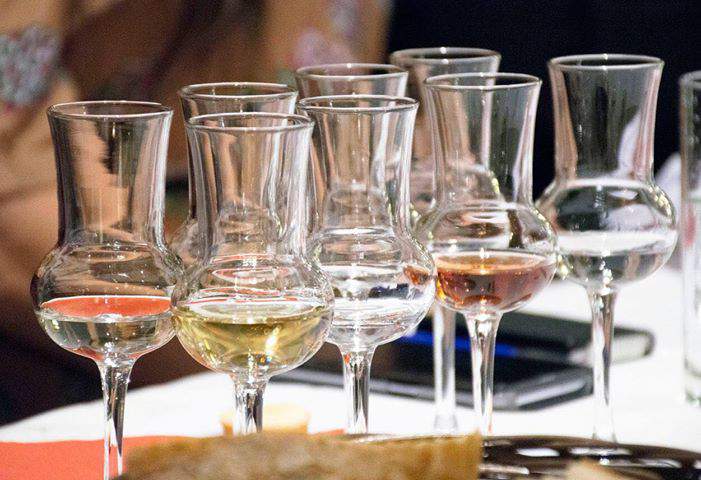Once you come to Hungary, you will soon realise that there is a variety of ‘national’ drinks to choose from, and Hungarians are proud of being multifaceted. Even though there are several drinks that are popular in Hungary, each of them has its own history and rules of drinking.
The Culture Trip has collected the most important tips to follow that you need to know if you head out for drinks in Hungary.
Cheers and clinking glasses
The most important thing when it comes to clinking glasses in Hungary is eye contact: just as your glasses touch, your eyes should meet, so pay attention to this little rule if you are clinking glasses with a Hungarian – otherwise, you might be considered rude.

Now that we have cleared the metalinguistic issues, let us turn to the actual ‘cheers’. If you have been following our language lessons, you know that Hungarian is a fairly difficult language, and ‘cheers’ is no exception at all. In Hungarian, we say ‘egészségedre’, which translates to ‘to your health’ (you can use it when someone sneezes too, as ‘bless you’). The Culture Trip suggests pronouncing it as ‘egg-ess-shay-geh-dreh’. Hungarians say ‘egészségünkre’ too, which means ‘to our health’. This is pronounced as ‘egg-ess-shay-goonk-reh’.
If you do not feel like you are getting the hang of this, opt for ‘egsh’ – since sometimes Hungarians use it too, they will be totally fine with it.
Pálinka
Pálinka is the national drink in Hungary that ‘could well topple a horse’, as the article claims. Well, in reality, the pálinka sold at bars is usually at 40%, but the one that really has a kick to it is the homemade pálinka, which could reach even 80-80%. Because of the high alcohol concentration, it is often believed to have anti-inflammatory, virus killing and pain-killing abilities.

Pálinka is most commonly made from pear, apple, sour cherry, plum or peach, but you can find specialities like honey, nut, or blueberry pálinka.
How is pálinka drunk? Pálinka is mostly served before a meal or at a celebration. Usually, you slam it down in one go, but it is not uncommon for Hungarians to savour the quality kind and sip it slowly just to really enjoy the taste of it.
The Culture Trip suggests warming your emptied glass with your hand to detect whether it was good quality pálinka or not. If it is the first, then you should be able to ‘smell out’ the scent of the fruit it was made from.
Unicum
The other national spirit is the Unicum, which is made from herbs, but it is weaker than Jagermeister and much much much bitter. Just like pálinka, Unicum is believed to be a magic potion too,
regarded as medicine rather than an alcoholic drink,
and it is often drunk after a big meal as a digestive aid. As we wrote not long ago, Unicum has been in production for 200 years, but the recipe remains a closely guarded secret to this day.

Wine
Wine production has a noble heritage in Hungary and a long history stretching all the way back to the Romans who, in the 5th century AD, brought wine production with them to this region. The fact that the French and Italians both used Hungarian wine barrels in the past goes to show that Hungarians are really good at winemaking.

One of the most popular and well-respected Hungarian wine regions is found in Tokaj, where wine producing has been going strong for centuries; even the most powerful European monarchs drank wine from Tokaj.
The two best-known Hungarian wines are the Egri Bikavér (Bull’s Blood), a spicy red wine, and the Tokaji Aszú, a sweet white wine.
Fröccs
Fröccs is so popular in Hungary that there are even bars specialised in serving it. Fröccs is made from soda water and usually white wine or rosé. Since the soda bottle was invented by a Hungarian, Ányos Jedlik, Hungarians often claim fröccs to be their invention.

Fröccs (or spritz) is ideal in the summer; it is a very refreshing drink. There are guidelines when it comes to ordering, sort of codes referring to the sizes and the wine-to-water ratio: for example, a kisfröccs (small spritz) has a 1:1 wine-to-water ratio.
Cola-wine
Cola-wine is basically red wine mixed with cola, and it is often the drink with which teenagers ‘get used to’ drinking wine, as the sugary cola masks the taste of alcohol and of cheap red wine. This is not a Hungarian ‘invention’, as there is a Spanish drink with the same recipe, called calimocho. In Hungarian, cola-wine is referred to as vadász (hunter).
Beer
Although beer might not be among the drinks one (even a Hungarian) would list as Hungarian, there are pretty good local lagers in Hungary, like Soproni, Borsodi, Arany Ászok or Dreher. However, most of these manufacturers were taken over by big international brands like Heineken.

Photo: www.facebook/Békésszentandrási Szent András Sörfőzde
If you want to drink a truly Hungarian beer, try the Pécsi Sör, a quality pilsner.
Hungarian lagers are cheaper but just as great as imported lagers, so it would be silly not to try them at least. On this note, try to avoid Kőbányai, which was mass-produced in the Soviet era, and quantity was valued over quality – writes The Culture Trip.
featured image: facebook.com/miskolcnews